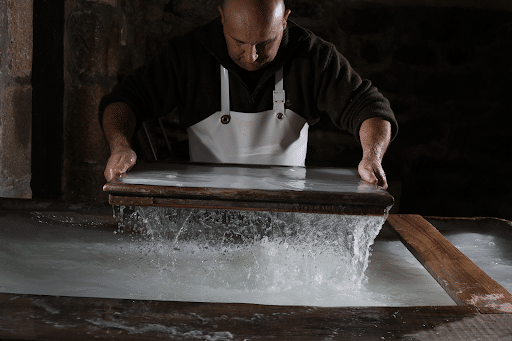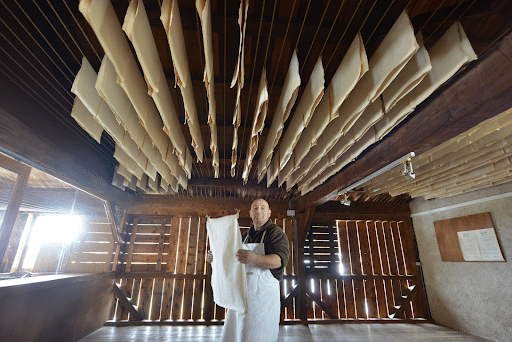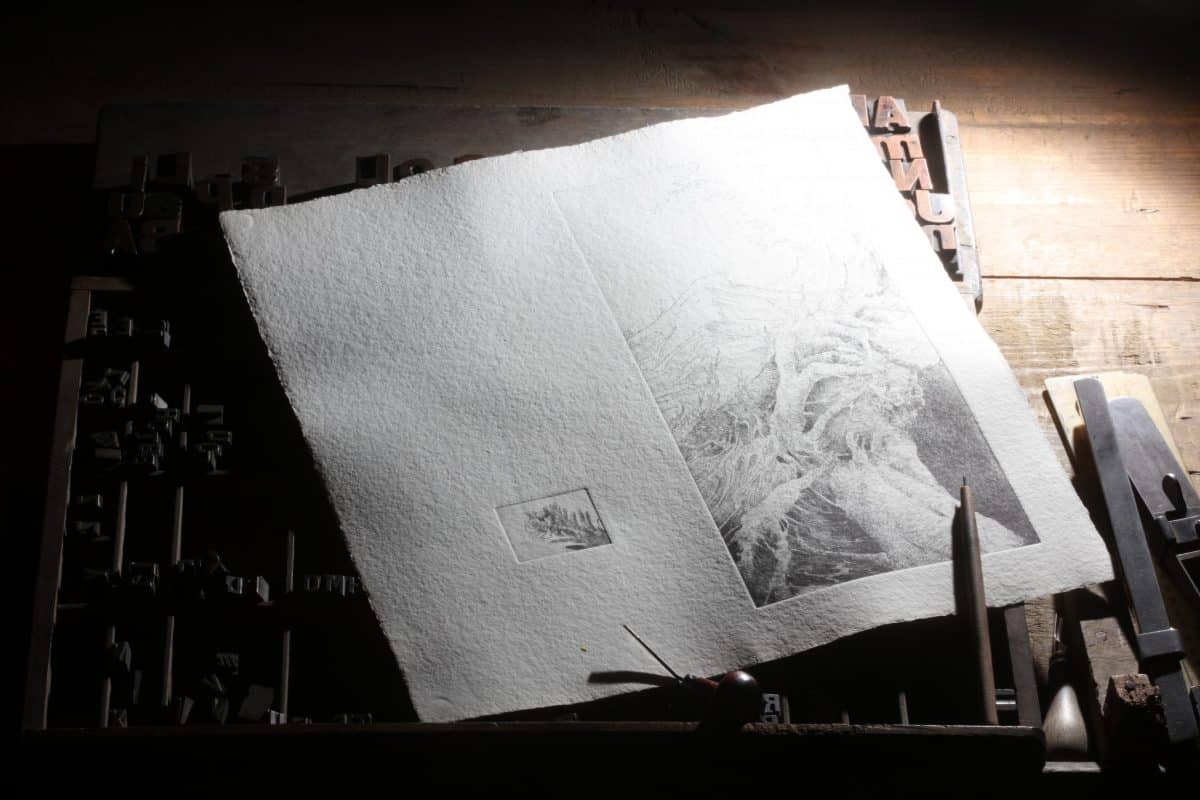A know-how matured over several centuries
The invention of paper would be Chinese: Moung Tian, general of the Empire, invented it in 200 BC. A dip in history where the transmission of this secret was carried out very slowly. It wasn't until 751 AD. let the Arabs spread it. After taking many Chinese prisoners in the Battle of Talas. In the XNUMXth century, the first paper mills appeared in the West. Soon the papermakers of Ambert were born.

Subsequently, it was the Auvergne paper industry, notably represented by Livradois-Forez, which became the largest in the kingdom. It remained so until the end of the XNUMXth century, or even a little beyond.
The living tradition of the papermakers of Ambert
Au Richard de Bas mill if the manufacturing secret is not jealously guarded, the activity remains no less dynamic.
“At the Richard de Bas mill, visitors come to rediscover authenticity,” reports Sylvain Peraudeau, co-owner of the mill.

“If four or five paper mills are still in operation in France, the Richard de Bas mill is one of the only ones to have a mallet pile. We thus wish to maintain this know-how as at its origin, in particular for the creation of paper-rag. We also produce papers with flower inserts, artists also come to create floral compositions. »

And a heritage that is also part of the Auvergne landscape
This is Marius Péraudeau, paper representative, friend of Henry Pourrat who bought the mill a few years after the death of the last papermaker in 1938, with the intention of restarting it. It is said that having become master of the place, the new owner sat down on the low wall facing his property. And said to himself that it was not enough to restart the mill, but that it was also necessary to show how the paper was made. In other words, the mill had to be made into a living museum. After major works, production was able to resume in the summer of 1942 and the inauguration took place in July 1943. Since then, the public has never deserted it.

Finally, the Chemin des papetiers, which winds through the Valeyre valley, allows hikers to see other mills, which have now been shut down. Including that of Nouara which was one of the largest factories of the XVIIIe century and which was recently restored by a local foundation working in the field of heritage and culture.

